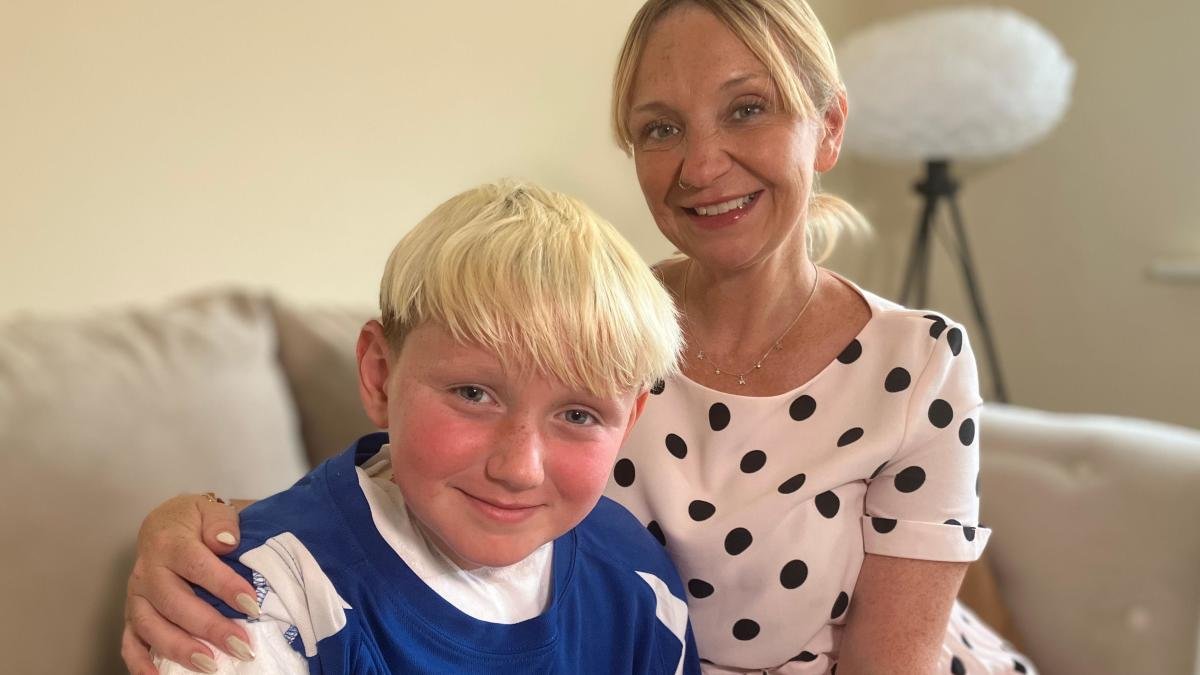A family’s dream holiday turned heartbreaking when a 10-year-old boy needed emergency hospital treatment after suffering a severe sunburn. Hector’s experience during a family holiday in Cape Verde has now become a cautionary tale for other travellers.This idyllic holiday was supposed to be a happy ending to the family’s trip, but it turned into a medical emergency after they had one last fun time in the hotel pool. Hector, who was having a great time in the sun, suffered from painful and debilitating sunburn that required immediate medical attention.A sunny
day gone wrong
Hector’s mother, Natalie, recalls the events leading up to the incident with a heavy heart. The family, eager to enjoy their final hours in the sun, had planned to have a last swim in the hotel pool before heading to the airport. However, a serious lapse spoiled their plans. They had run out of their supply of suncream, and had to buy a new bottle from the resort. Natalie purchased a high-factor sunscreen, assuming it would provide adequate protection. Unfortunately, shortly after applying it and letting Hector swim, his skin began to react dramatically. His back and shoulders turned a deep, painful red, and large blisters began to form. The sight of Hector’s burned skin immediately caused concern. Desperate to ease her son’s suffering, Natalie sought medical help. Hector was rushed to a nearby hospital, where the severity of his sunburn was assessed. Doctors determined that the blisters needed to be treated immediately. Hector underwent a procedure under general anesthesia to safely
A painful reality
rupture the blisters and clean his wounds. The goal was to prevent any potential infection and ensure the best possible recovery. Hector is now recovering, although his back and shoulders are heavily bandaged. The family has been advised to be especially vigilant about his skin health over the next two years. The severity of the burns has left Natalie deeply concerned about the safety and reliability of sunscreen products bought from abroad.Natalie has bravely decided to share Hector’s story to warn other families about the risks of using unfamiliar sun protection products when travelling. She suspects the sunscreen they have bought may be out of date, mislabelled or even fake. Her advice to other holidaymakers is clear: use suncream you know and trust. I would advise anyone not to buy suncream you are not familiar with. Use something you know, use something you trust,” Natalie said.Dr Sunday Nwoze, plastic surgery registrar at Nottingham’s Children’s Hospital, echoes Natalie’s concerns. He highlights that the hospital usually only sees a few cases of such severe sunburn each year. Dr Nwauz emphasises the importance of using reputable sun protection products and minimising the time spent in the sun during peak hours.According to Dr Nwauz, “Holidaymakers should aim to use sun protection products they are familiar with while abroad. In addition, it is important to limit sun exposure, especially between 11:00 and 16:00, when the sun’s rays are strongest and most damaging.”
A cautionary tale
This incident underscores the need for travelers to exercise caution when purchasing sun protection products abroad. Sun intensity and sunscreen quality can vary widely, and unfamiliar products may not provide the expected protection. For families planning trips to sunny destinations, experts recommend the following precautions: Bring your own sunscreen: Whenever possible, bring an adequate supply of suitable sunscreen for your family. This ensures you are using a product you trust. Check expiration dates: Be aware of expiration dates on sunscreen products. Expired sunscreens may not provide adequate protection. Buy from reputable sources: If you must buy sunscreen abroad, choose a
reputable store or pharmacy. Avoid buying from street vendors or unknown sources. Apply liberally and frequently: Apply sunscreen liberally and reapply every two hours, or more frequently if swimming or sweating. Stay in the shade during peak hours: minimise sun exposure between 11:00 and 16:00, when UV radiation is at its highest. Natalie’s decision to share Hector’s story is a powerful reminder of the potential risks associated with inadequate sun protection. While Hector’s recovery continues, his family hopes their experience will help others avoid similar troubles. The family’s story emphasises the vital importance of taking preventative measures to avoid sunburn. As more families head out on summer holidays and sunny vacations, the level of awareness about sun safety is rising.
